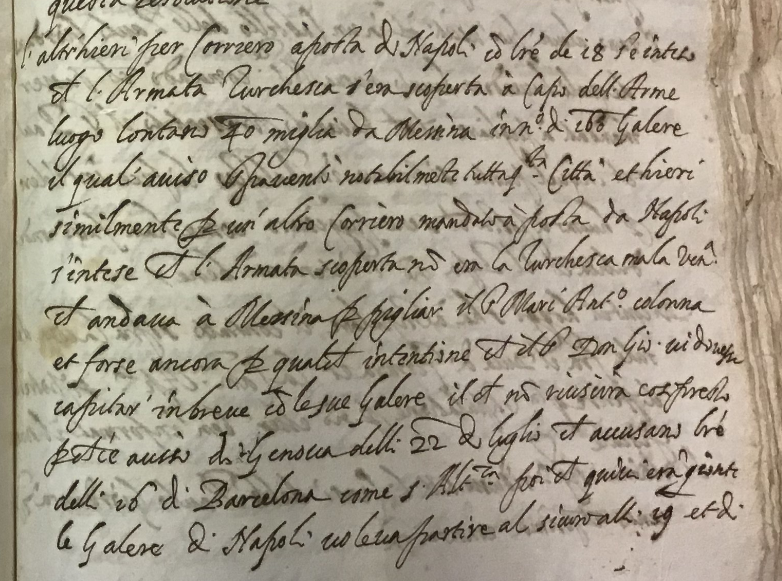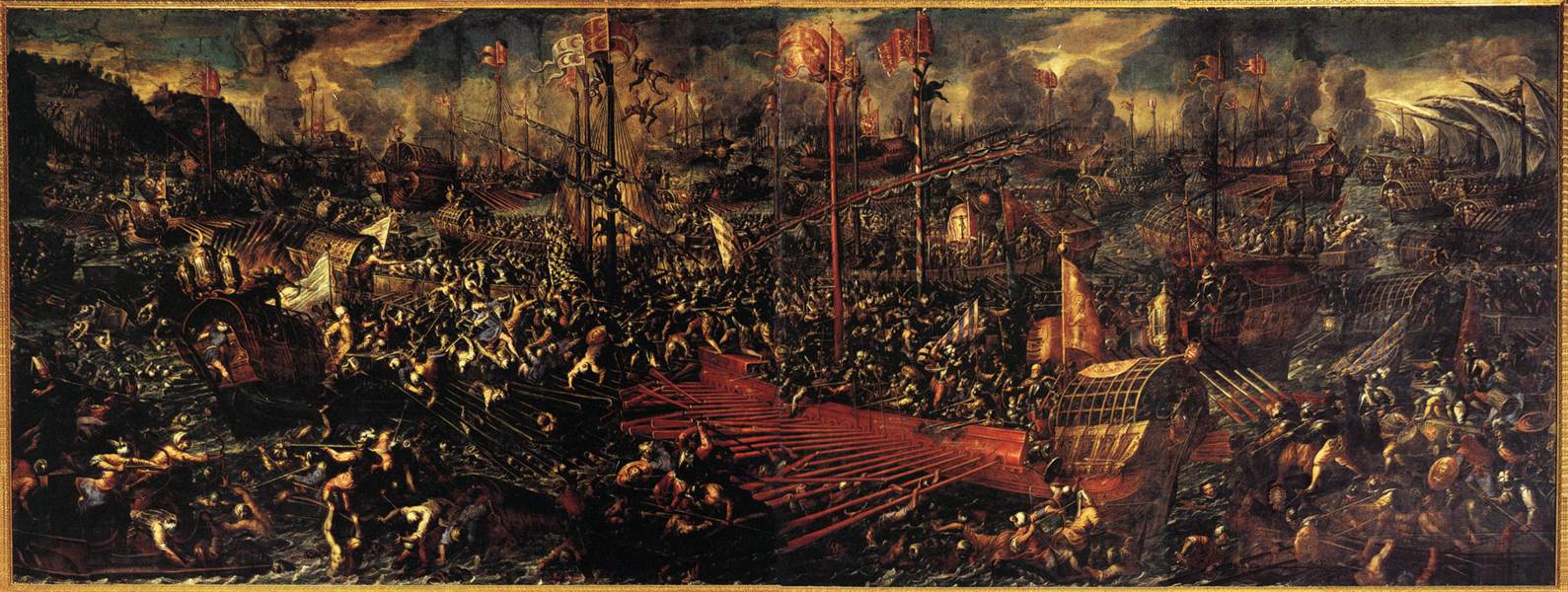Less than three months before the battle of Lepanto, famously won by the Holy League against the Turks on October 7, 1571 in the Gulf of Patras, passions in the Mediterranean are already running high. Bit by bit, the Venetian maritime empire is losing territory to Ottoman expansion, most recently, Nicosia and, with particular fierceness, Cyprus. The Italian states’ maritime cities are on high alert for any signs of action. But the eyes may deceive, as this newsletter from Rome dated 27 July 1571 testifies. What actually did the people of Messina see off their coast?
MdP 4025 fol. 511r

We read (in translation):
“Two days ago by a special mail courier from Naples with letters of the 18th it was heard that the Turkish Armada had been spotted from Capo dell'Arme, 40 miles from Messina, numbering 160 galleys, which news notably frightened this whole city, and similarly by another courier sent by post from Naples it was understood that the armada in question was not the Turkish one but the Venetian one, which was heading to Messina to pick up Signor Marc'Antonio Colonna.”
At least the initial mistake was quickly corrected, we might think!
But how to commit such an elementary error, enough to frighten a whole city?
The explanation may lie in the similarity of the two forces, Venetian and Turkish, accustomed to deal with each other since the emergence of both as maritime powers, clashing in that zone, in spite of the gradual emergence of sailing ships as the chief vehicles of naval warfare.
And for strikingly stylized versions of galley encounters, by some of the greatest artists on the subject, the walls of the Ducal Palace in Venice are a visual encyclopedia, as for example Andrea Michieli’s splendid Battle of Lepanto, depicting the prelude to victory of Venice and the Holy League in glowing colors:
https://it.wikipedia.org/wiki/File:Battle_of_Lepanto_1595-1605_Andrea_Vicentino.jpg

So the people of Messina had plenty of reason to be curious and even afraid; no wonder the first answer to the question “friend or foe” was the latter...
BIBLIOGRAPHY
Gennaro Varriale, Arrivano li turchi. Guerra navale e spionaggio nel Mediterraneo (1532-1582), Novi Ligure: Città del silenzio Edizioni, 2014
J.C. Sharman, "Power and Profit
at Sea. The Rise of the West in the Making of the International System," International Security, Vol. 43, No. 4 (Spring 2019), pp. 163–196, https://doi.org/10.1162/ISEC_a_00346
John Francis Guilmartin, Jr., Gunpowder and Galleys: Changing Technology
and Mediterranean Warfare at Sea in the Sixteenth Century, Cambridge, UK: Cambridge University
Press, 1974.
Niccolò Capponi, Victory of the West. Cambridge, Mass.: Da Capo Press, 2007.
